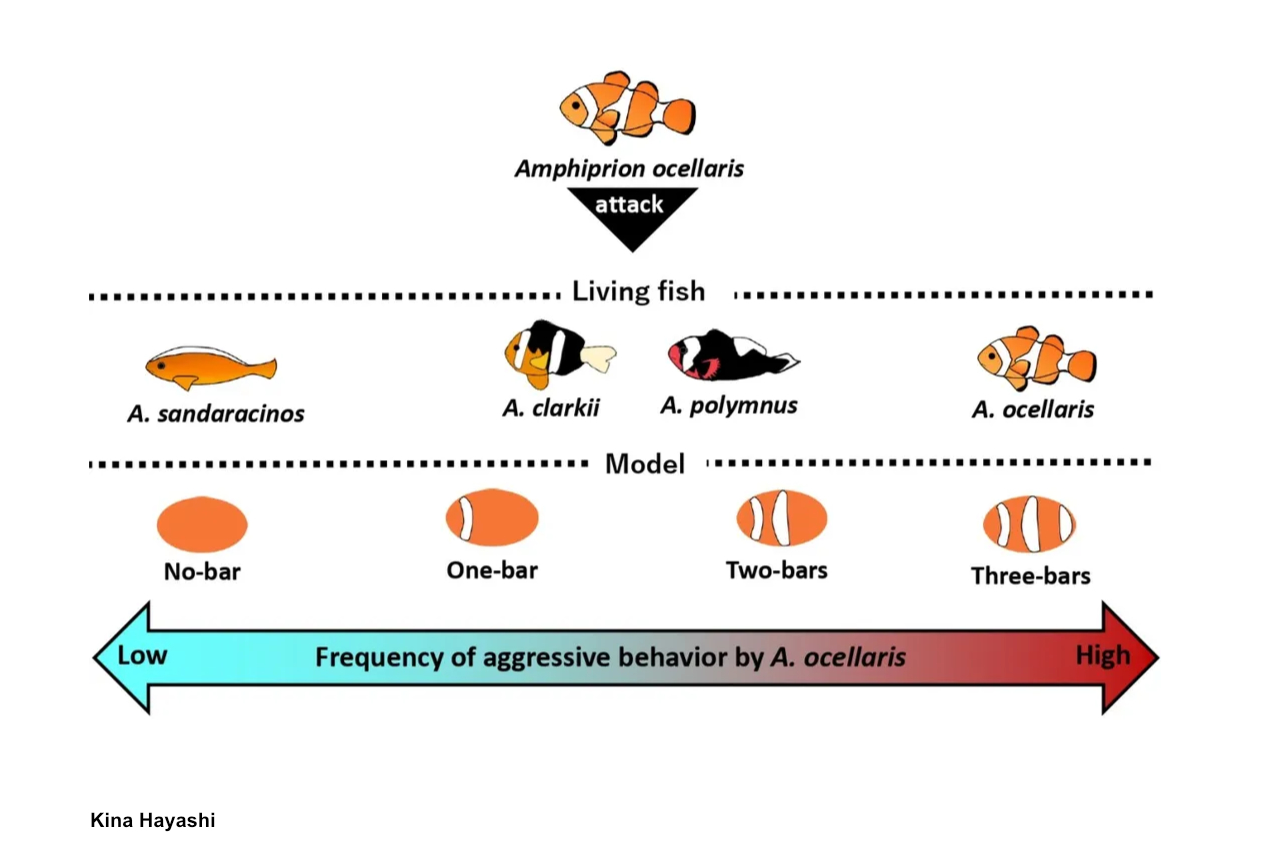Clownfish Can ‘Count’ Stripes on Other Fish to Identify Intruders, Study Suggests

Clownfish living in sea anemones aren’t as amicable as Pixar’s Finding Nemo might suggest. The reef-dwellers are actually highly territorial, and they can be quite aggressive. “Just keep swimming” isn’t a mantra for life; it’s what they signal to other fish—or even humans—that get too close for comfort. “These are literally among the most aggressive animals on our planet,” Justin Rhodes, a marine neuroscientist at the University of Illinois Urbana-Champaign who has been bitten by clownfish to the point of bleeding, tells Science’s Christa Lesté-Lasserre.
Now, recent research is exploring how ocellaris clownfish distinguish between members of their own species and other reef fish. Previous studies indicated that ocellaris clownfish use the absence or presence of vertical white stripes to identify intruders, with no stripes signaling acceptance and similar striping prompting defense. However, the question of how they recognize their own species amidst the diverse array of reef fish remained unanswered. The latest research suggests that ocellaris clownfish not only identify stripes but also count them, as revealed in a study published in the Journal of Experimental Biology. To investigate this, researchers raised a group of common clownfish in isolation, ensuring they had no exposure to other fish species.

The recent research outlines how ocellaris clownfish differentiate between members of their own species and other reef fish. Previous studies indicated that ocellaris clownfish use the presence or absence of vertical white stripes to discern intruders, with the absence of stripes indicating acceptance and similar striping prompting defensive behavior. However, the method by which they recognize their own species among the diverse range of reef fish remained unclear. New findings suggest that ocellaris clownfish not only recognize stripes but also count them, as demonstrated in a study published in the Journal of Experimental Biology. To explore this, researchers raised a group of common clownfish in isolation, ensuring they had no exposure to other fish species.
The study involved observing the behavior of common clownfish in response to intruders of their own species and other reef fish. They set up tanks with cameras and introduced newcomer common clownfish as well as fish from three other species: orange skunk clownfish, Clarke’s anemonefish, and saddleback clownfish. The common clownfish exhibited the most aggression towards other common clownfish and were least aggressive towards orange skunk clownfish. The Clarke’s and saddleback clownfish experienced mild aggression. The researchers then introduced small groups of clownfish to decoys with varying numbers of stripes. They found that the number of stripes on the decoy significantly influenced the clownfish's aggression. Clownfish attacked decoys with three stripes the most, followed by those with one or two stripes, and least often targeted decoys with zero stripes.
Alonso Delgado, a marine evolutionary biologist at Ohio State University, who was not involved in the study, expressed confidence in the research findings. Delgado noted that clownfish display two stripes when they are around 11 days old and gain the third stripe a few days later. This led the researchers to consider whether the school's aggression towards the two-striped decoy is linked to their developmental stage. Lead author Kina Hayashi, an ecologist at the Okinawa Institute of Science and Technology in Japan, suggested that there might be additional factors besides white vertical lines influencing species discrimination. However, the experiment indicated that the number of white vertical lines is significant in distinguishing the same species and determining whether aggression is warranted or not. To learn more, please read Christian Thorsberg’s article in the Smithsonian Magazine https://www.smithsonianmag.com/smart-news/clownfish-can-count-stripes-on-other-fish-to-identify-intruders-study-suggests-180983726/